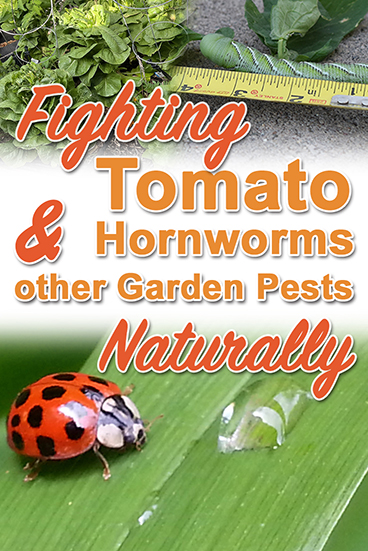Are You Ready to Do Battle Without Chemicals?
Garden pests are everywhere, hiding until you suddenly notice their presence usually in the form of damage to once beautiful fruit and vegetables! Here’s some helpful info to combat common garden pests.
Contributing author: Zen Mocarski
(Thank you to Zen Mocarski, Health Education Specialist at AZ Health Zone with the Mohave County Department of Public Health, for contributing to this blog post and for providing excellent gardening information for the public of Mohave County!)
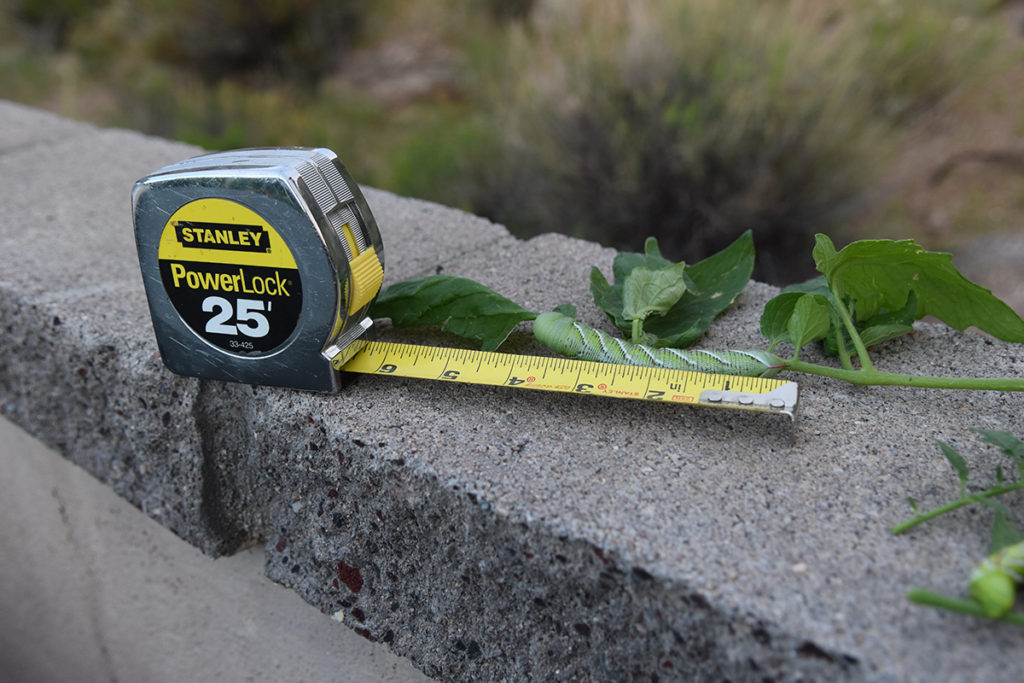
An individual once spoke about a caterpillar on a tomato plant and not wanting to remove it because it would turn into a butterfly. A photo confirmed the caterpillar’s identity: a tomato hornworm. The advice was to remove it or the tomato growing season could be short-lived.
Although it does turn into a wonderful pollinator known as a sphinx moth, its caterpillar stage can devastate tomato plants quickly because its appetite for the leaves and flowers is unmatched. Knowing they can end all hope of harvesting fresh, great-tasting tomatoes makes removal important.
Waging War
Don’t allow the name to deceive you; tomatoes may be their first choice, but potato, eggplant, and pepper plants can be on the menu. Because they blend in exceptionally well, hornedworms can be difficult to find. Check your plants every day or two. Among the telltale signs of a problem is that once-flourishing branches have suddenly been stripped of leaves. Small, black droppings (being polite) around the plant is another indication of a hornworm.
At this point, control becomes a gardener’s primary focus. Weekly pruning can help reveal the caterpillars. Once found, grasp and pull it off or clip a piece of the branch it is on. For those with chickens, the worms make a wonderful snack. They can be placed on the branch of another plant to allow it to complete its lifecycle or tossed into an open area where they are visible to birds. Those near other homes can drop the caterpillars in soapy water to avoid making your problem that of another.
A second method to find hornworms is the same used to find scorpions: blacklight. Go out after dark with a blacklight and shine it on the tomato and pepper plants, focusing primarily on the underside of the branches. If hornworms are present, they will glow green.
Prevention
Prevention can include turning the soil in the fall after the harvest. If reddish cocoons are found in the soil, remove them. Tomato lovers willing to sacrifice another plant may consider planting dill (another plant the hornworms enjoy) near the tomato plants.
Among the most important factors is to tend the garden regularly and inspect the plants to identify and treat any issue before it becomes a problem.
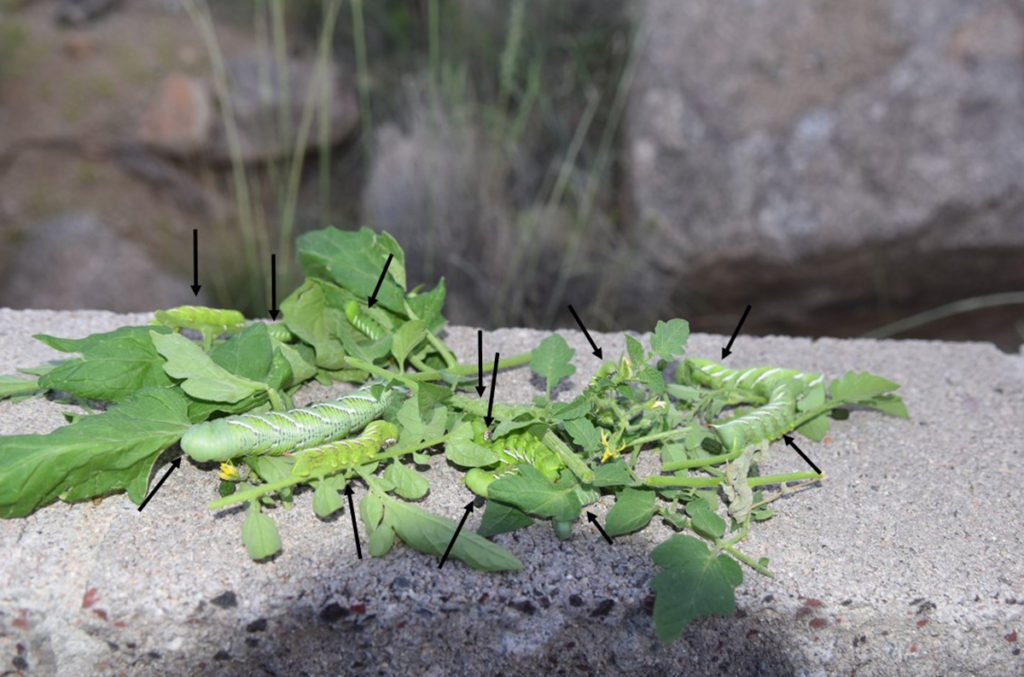
More Garden Pests…
By Brenda Ellis
This post contains affiliate links. See Our Affiliate Disclaimer page for details.
Here’s some of the most common garden pests in addition to Tomato Horn Worms lurking in our Southwestern US gardens…
Aphids
Aphids are another common garden pest. One day you have beautiful, healthy plants and the next day you don’t!
Aphids are white bugs with pear-shaped bodies and long antennae. They are found in almost every garden. They can tolerate almost any weather condition and they multiply quickly. This makes them one of the most common garden pests we all must combat!
Aphids feed on bean, cabbage, potato, green peach, and melon plants most often, but will graze throughout your garden on a variety of plants. There are several different species of aphids, each with a different affection when it comes to the areas of plants they prefer. Some prefer leaves, while others love stems. Still others prefer buds or flowers. This can make it difficult to wage war on aphids before they destroy your garden.
If the leaves of your plants begin to discolor or dull, they may be under attack by aphids. If you are unsure, check the underside of the leaves for aphids hiding there.
How to fight them
I like natural pest control methods as much as possible. The best natural way I’ve found to fight aphids is to bring in their top predator: the Ladybug! Live ladybugs are available online from retailers such as Amazon.com.
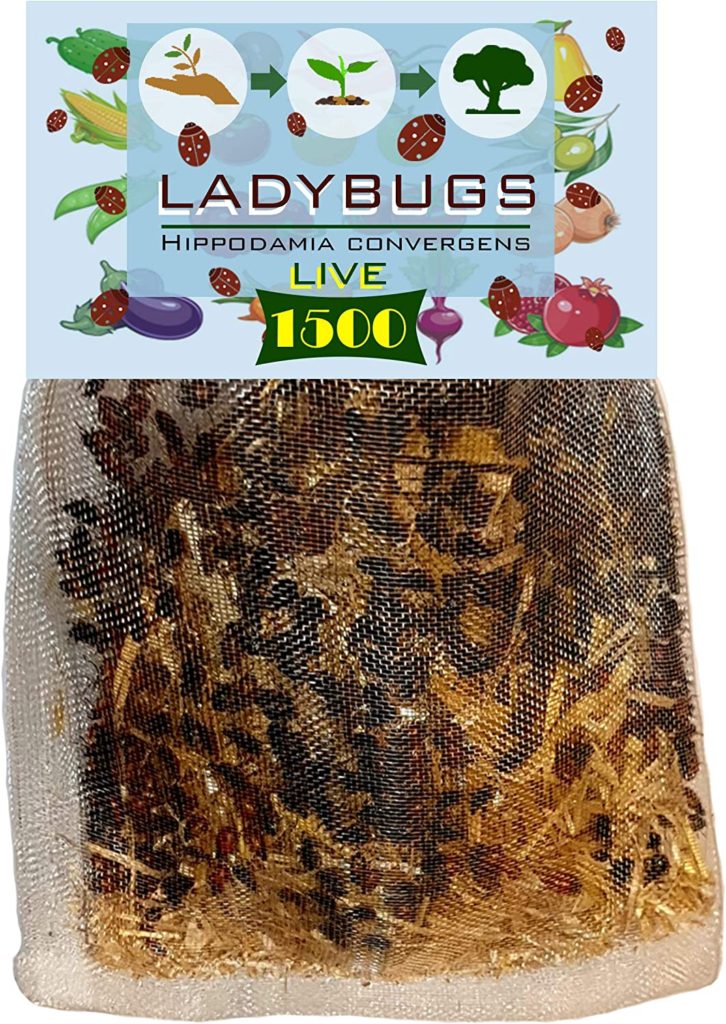
Amazon.com and other online retailers offer live Ladybugs for sale with rapid shipping – the perfect all natural solution to fighting aphids!
Last summer when my cucumber plants were decimated by the aphids, I ordered a couple hundred ladybugs to fight back and a they arrived in no time! I released them in my garden in the evening as recommended (Cue evil villain laughter). It was too late for my cucumber plants, but perfect timing to save my tomatoes and other plants.
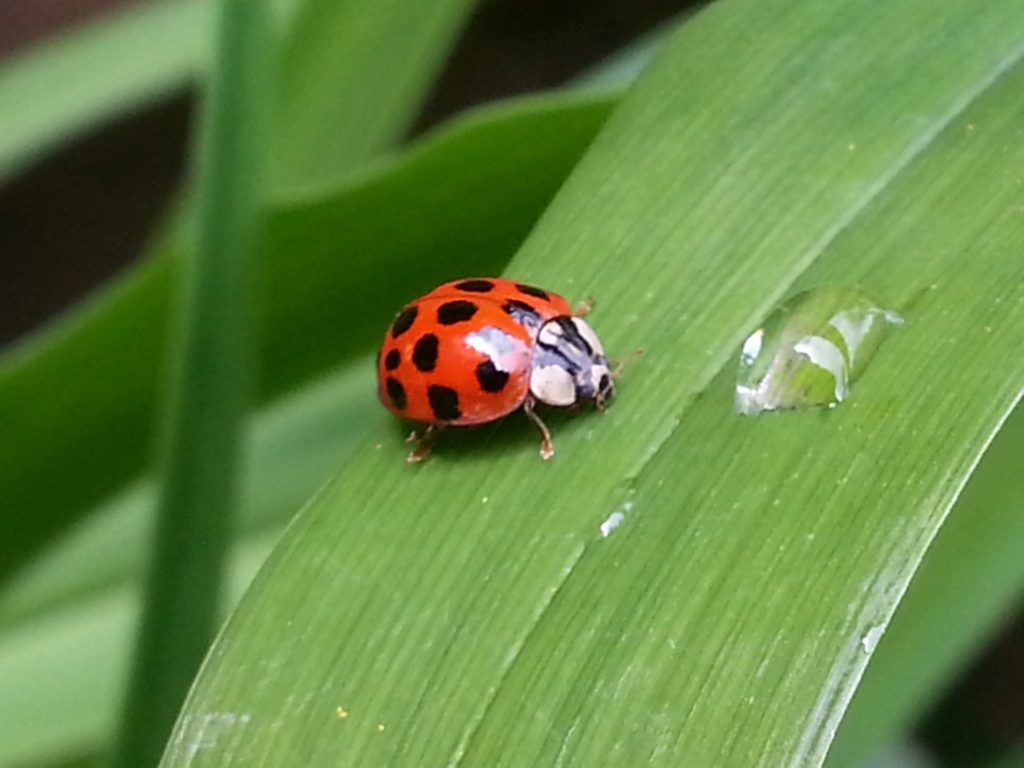
Grasshoppers
I haven’t had a “problem” lately with grasshoppers and locusts since I have free range chickens and Guinea fowl all over my property. I am aware of one or two grasshoppers that have shown up in my garden and done some minor damage, but Grandma had a serious problem with them in her greenhouse last year. Cue the Guinea fowl.
I caught a couple of my Guineas and loaded them up to go help Grandma. Guinea fowl are different than chickens. They don’t like to scratch and dig up plants like chickens do, but they will nibble on them if there’s no delicious grasshoppers left to eat. They are tremendous hunters of any pests like larger insects.
After turning the Guineas loose in the greenhouse, my mom called me a day or two later to say that ALL of her grasshoppers were gone.
Don’t worry if you don’t have free range chickens or Guinea fowl. Attracting wild birds to your garden will help manage the grasshopper population as well!
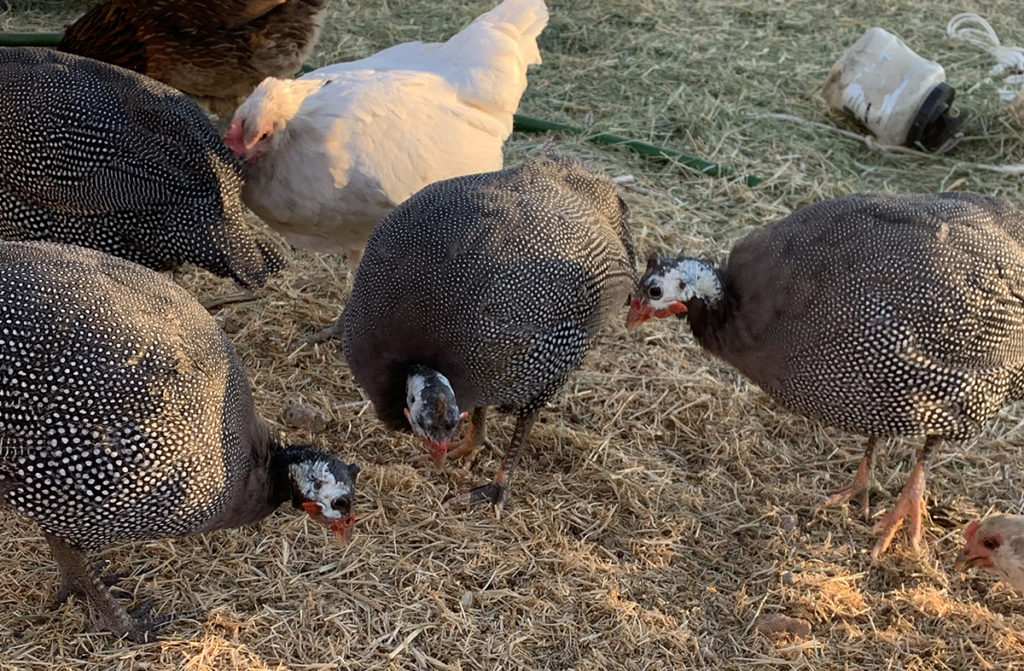
Ants
Ants can invade quietly and next thing you know, your feet are being attacked while you’re standing in your orchard or garden. I obviously don’t want to use chemical ant treatments around my family or in my yard where my chickens might eat it. My secret to controlling the ant population naturally is to sprinkle CORN MEAL around problem ant nests in my yard. Yes, that’s correct. Corn meal! Also, chickens tend to peck at anything that moves on the ground (such as ants).
White Flies
Adult whiteflies hide and feed on the undersides of leaves. They are most noticeable when you rustle the leaves and a cloud of tiny white specks emerges into the air like “plant dandruff,” as some gardeners aptly describe them.
Whiteflies reproduce quickly by laying white eggs that hatch into white crawlers on the undersides of leaves. Whiteflies prefer sunny, warm conditions. The crawlers and adult flies suck plant juices, weakening the plants.
HGTV recommends the following treatment for white flies, “Hang yellow traps coated with a sticky substance close to the tops of plants. Whiteflies are attracted to the color yellow, and once they land will be stuck and die. Hand-crush small populations of young aphids and whiteflies. Encourage natural enemies in the garden, such as ladybugs and lacewings, by planting diversity of plants and not spraying pesticides. As a last resort, use low-toxic sprays such as insecticidal soap, horticultural oil, and neem oil to reduce populations before they get out of hand. Repeat treatments every few days until the problem is under control.”
The Nuclear Option for Garden Pests: Diatomaceous Earth
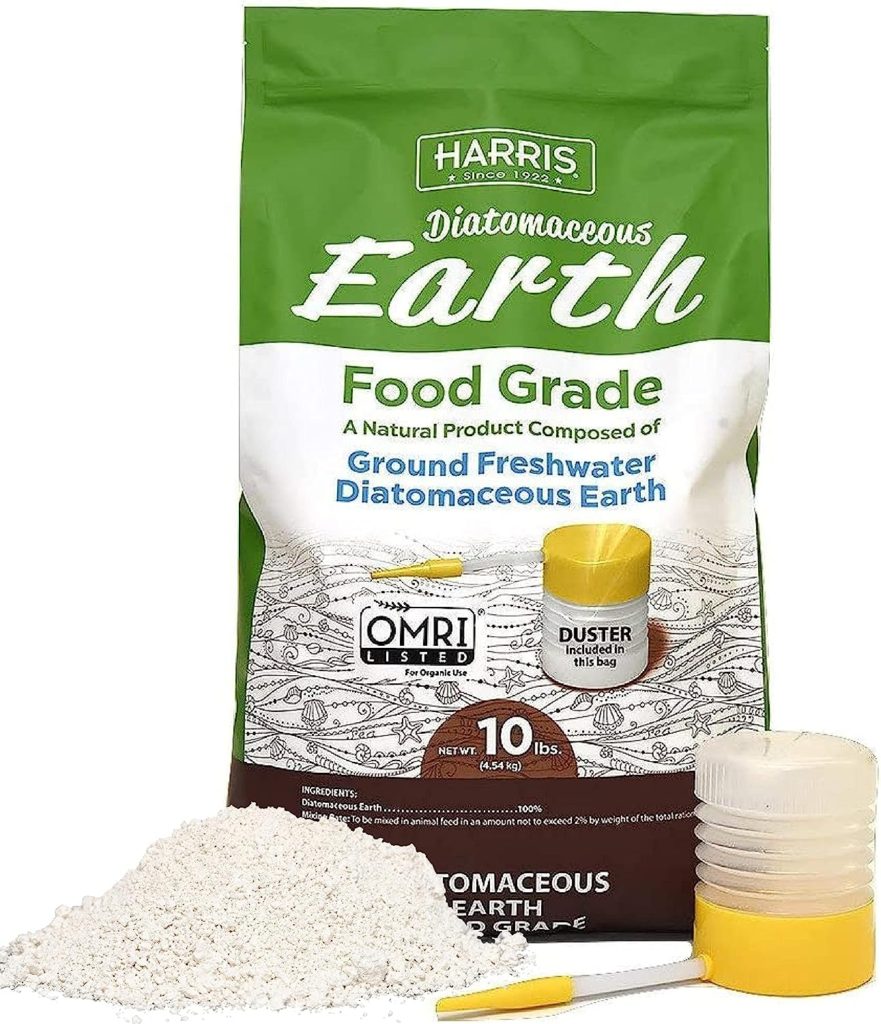
Diatomaceous Earth is a dust made from fossilized algae that is a natural, chemical free way to eliminate insects around your home or garden pests attacking your plants. It is especially helpful with mites, ants, and cockroaches. It is also readily available on Amazon and in your local Home Depot.
Diatomaceous Earth is a dust made from fossilized algae that is a safe, chemical free way to eliminate many types of insects. It is especially helpful with mites, ants, cockroaches and other exoskeleton-type insects. Here’s some helpful info:
- Diatomaceous earth (D.E.) is fossilized algae dust that helps eliminate bugs by dehydrating them.
- D.E. will unfortunately kill good insects as well as bad ones, so be sure you’re using it in a dire situation or an area with primarily problematic bugs.
- Apply little bits of diatomaceous earth around your home or sprinkle over plants to directly battle garden pests.
- For garden use, sprinkle it throughout rows or beds and be sure to reapply after a heavy rain or routinely if insects continue to be a problem with your plants.
- D.E. can be an irritant, so avoid contact with eyes or breathing in the dust.
Happy gardening!
Check my other posts here if you enjoyed this awesome garden info! Also, make sure to subscribe so you never miss out on news from The Far Out Farm!
